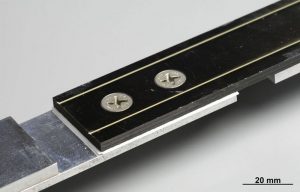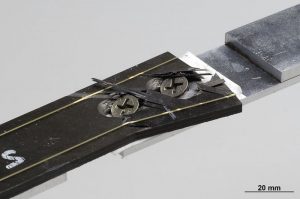NLR tests of composite joints corroborated Fokker’s design methodologies for building the Gulfstream G6 business jet.
Composites are lighter and stronger than aluminum, the traditional construction material for aircraft. But the material properties of composites have not always been established in full detail. That goes for the elementary properties of the composite itself, but also for its interaction with other construction materials like rivets and bolts.
In 2007, NLR was contracted by Fokker, a Dutch components supplier to the air transport industry, and the US aircraft manufacturer Gulfstream to examine the properties of lap-joints between composites joined by rivets, nuts and bolts. This study was rounded off successfully in 2009. The chief aim of the project was to validate Fokker’s design methodology. Fokker supplies composite sections of the tailplane of the new Gulfstream G6 business jet. With this study, NLR has therefore effectively bolstered the competitive strength of Dutch industry.
The test setup was relatively simple. Strips of composite of the type used in the G6 were joined by riveting in precisely the same way as in the aircraft design. The composite strips, which were attached to each other in eight different ways, first underwent static breakage strength trials. The joints were also tested dynamically for fatigue symptoms by putting the strips under variable tension for lengthy periods. A series of tests were also conducted at varying temperature and humidity levels. It is important to conduct tests under various conditions, as aircraft in flight are exposed to strongly fluctuating temperatures and must be fit for operation in both tropical and Arctic environments.
Although these tests were run in a relatively simple setup, the results were subjected to a rigorous control regime. Inspectors from the American Federal Aviation Administration (FAA) visited the NLR facilities in Marknesse to verify that the tests were being conducted correctly. The fact that the meticulous FAA gave their approval is testimony to the professionalism with which the tests were conducted.
The composite strips underwent static breakage strength trials.
The joints were also tested and dynamically for fatigue symptoms – © NLR


